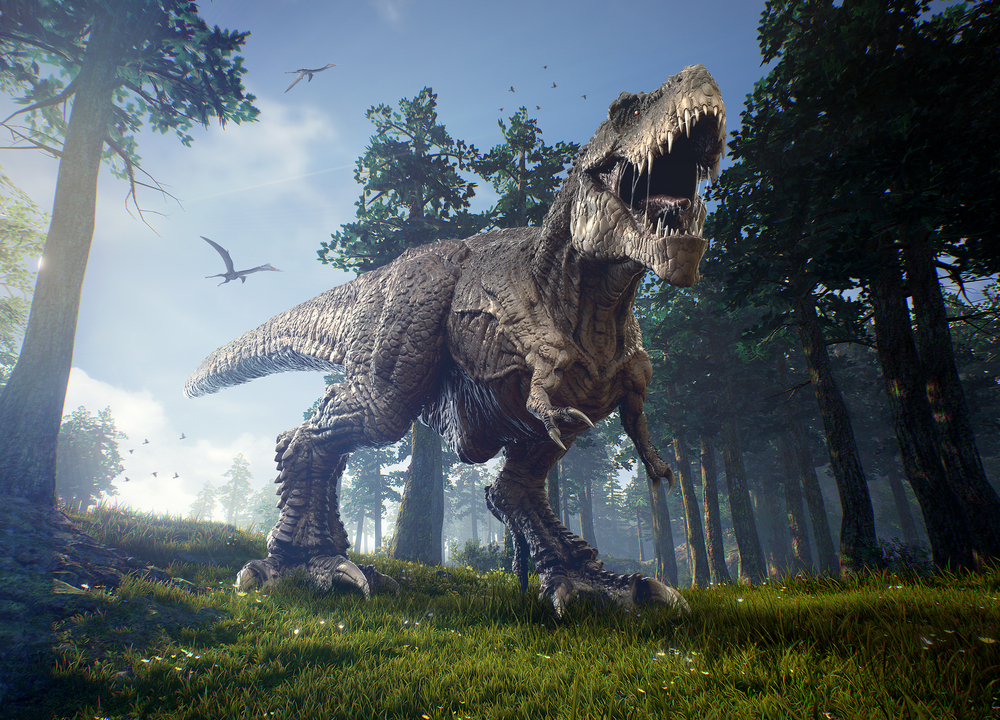
The remains of a horse-sized species of tyrannosaur have been discovered in Uzbekistan, revealing some long-sought-after pieces of a puzzle explaining how the most fearsome predator ever to stride across our planet came into being.
Tyrannosaurus rex was the undisputed king of the Cretaceous Period. Fully grown, this terrific beast weighed in at seven tonnes, measured 13 metres from teeth to tail. Its mouth bristling with 60-plus ferocious fangs, T-Rex stood on the very peak of the power triangle at the end of the dinosaur era, for several million years before the rule of the giants came to a dramatic end.
But these titanic killing and eating machines didn’t just pop out of an egg and get super-sized overnight; starting from a point about 170 million years ago, they evolved over a period of many millions of years, from earlier scaled-down species that were dog or human-sized. The details of this transition, however, have remained a mystery to scientists, who repeatedly tripped over and fell down a 20-million-year gap in the fossil record.
Until now.

Originally found during a field expedition in 2004, lying on the dust in the Kyzylkum desert in northern Uzbekistan, a 90-million-year-old partial skull has just been identified as a new species (named Timurlengia euotica after the 14th-century Central Asian warlord Timur, aka Tamerlane), which provides evidence of this middle period of T rex’s evolution. After much analysis, the remains have revealed lots of information to excited palaeontologists.
One of Timurlengia euotica’s most obvious features is an elongated inner ear, which reveals that it would have been particularly well-endowed in the cochlea department, and therefore possessed of excellent hearing (the ‘euotica’ part of the name means ‘well eared’). It also shows evidence of having a comparatively large brain, and its terrible teeth are very similar to those of the later T rex.
From the evidence now available to them, scientists believe that, instead of T rex developing heightened senses and highly-developed lethal weapons once it had reached a certain size and stage of evolution, it actually had these assets all along and used them to their advantage once other apex predators began to die off, eventually climbing to the very top of the food pile.
‘This is the first and only one we have from this big gap in the fossil record, and it finally tells us what tyrannosaurs were doing as they transitioned into the huge T rex,’ Stephen Brusatte, a paleontologist at Edinburgh University who described the fossils in Proceedings of the National Academy of Sciences, told The Guardian.
‘It gives us some insight into how T rex and its closest cousins became these giant, dominant, utterly successful apex predators. The tyrannosaurs evolved these features of the brain when they were still small, and those enhanced abilities may have come in handy when the tyrannosaurs had the opportunity to become dominant.’
Meanwhile, a separate study, published in Scientific Reports in February, indicates that during the later Maastrichtian period, Tyrannosaurus rex might have been partially responsible for the extinction of the other tyrannosaurids across western North America. In results that appear to be backed up by the latest findings from the Uzbekistan skull, the study suggests that T rex might have been an immigrant from Asia, as opposed to having evolved in North America as once thought.
